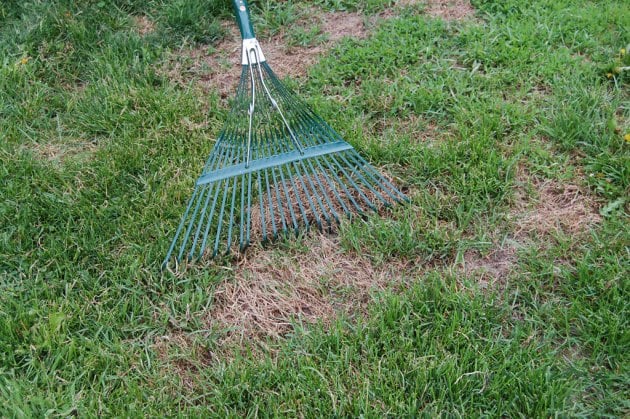After a long winter, spring can’t come quick enough for most homeowners. If a lawn could talk, it would likely say the same! After months of snow and ice cover, along with being subjected to the harsh elements of winter, most lawns have had all they can take.
Thaw
Melting snow is openly welcomed with a warm reception as it marks a sure sign spring is in the air. Snow banks begin to quickly recede, ice thaws into water and the lawn slowly becomes uncovered. What the lawn will look like and most importantly how it has overwintered remains to be seen?
Un-pile the Piles
The sooner the snow goes away the quicker the lawn can green up. Large snow piles along walkways and driveways can take much longer to melt than the rest of the lawn. Shoveling away or breaking up these piles by spreading them out across areas that have already melted is an easy way to speed up the melting process.
If Looks Could Kill
Generally speaking, the lawn usually looks pretty rough when you see it for the first time in the spring. As scary as this sounds, its no different than what you and I look like right after we roll out of bed after a long nights sleep! Good news is, the lawn usually looks worse than it really is, and with a little TLC it will be back looking like its old self again.
Damage Control
Winter damage is common and can range in varying degrees of severity. Much of what you see will be the remnants of winters brutal toll. Ice damage, snow mold disease, rodent tunneling, and salt damage are just a few things you can expect. Depending on the extent of the damage, a renovation practice may be required to help repair the lawn.
Spring to the Rescue
Spring is a great time to bring back the lawn if damage has occurred over winter. The same can be said over the summer months if repairs are required. It’s important to remember lawns are very resilient and as bad as the damage seems today, in a short time it will improve if the right set of recovery steps are taken
Spring Raking
Raking is a ritual for most homeowners as it signals the arrival of spring. After months of snow and freezing temperatures most homeowners embrace the warmer weather and look forward to getting outside and preparing the lawn for a year of enjoyment. Raking can be a big job, especially if the lawn wasn’t cleaned up diligently in the fall before the snow came. It is important to remove anything that is covering the lawn as early as possible so the lawn isn’t held back after the snow melts. Giving your lawn a light rake is a good first step and common practice one can do to get the lawn moving it on the right direction.
Light Raking
Raking is often the first task many homeowners do when it comes time to get the lawn ready for spring. Using a soft leaf rake it is important to be gentle on the lawn. Raking with a hard metal rake or raking very aggressive with a leaf rake can do more damage than good. The lawn can easily be ripped, torn and removed if you aren’t careful. Light raking is recommended to help loosen up matted down grass increasing airflow from the surface to the soil.
Removing Debris
Rake away debris including leaves, branches, sticks/twigs and excessive clippings that are piled up and covering the lawn. This will ensure nothing gets in the way when you are ready to mow, water, seed, fertilize and so on.
Thatch Prevention
Raking can do more than just remove debris. Raking can also help remove thatch layer buildup. A more aggressive raking will help remove dead grass blades and other dead and decaying
organic matter that is just waiting to add itself to an undesirable thatch layer.
Snow Mold
Snow Mold is a common lawn disease that leaves its mark across lawns in early spring. Visually it looks worse than it really is. Lightly raking these affected areas and removing the dead and diseased grass will help speed up recovery.
Vole
Small rodents called voles commonly reek havoc randomly tunneling across the surface of the lawn during the winter when snow cover exists. This damage can be excessive with tunnels and piles of dead grass littered across the lawn. Debris and tunneling can be lightly raked away to encourage quick recovery.






